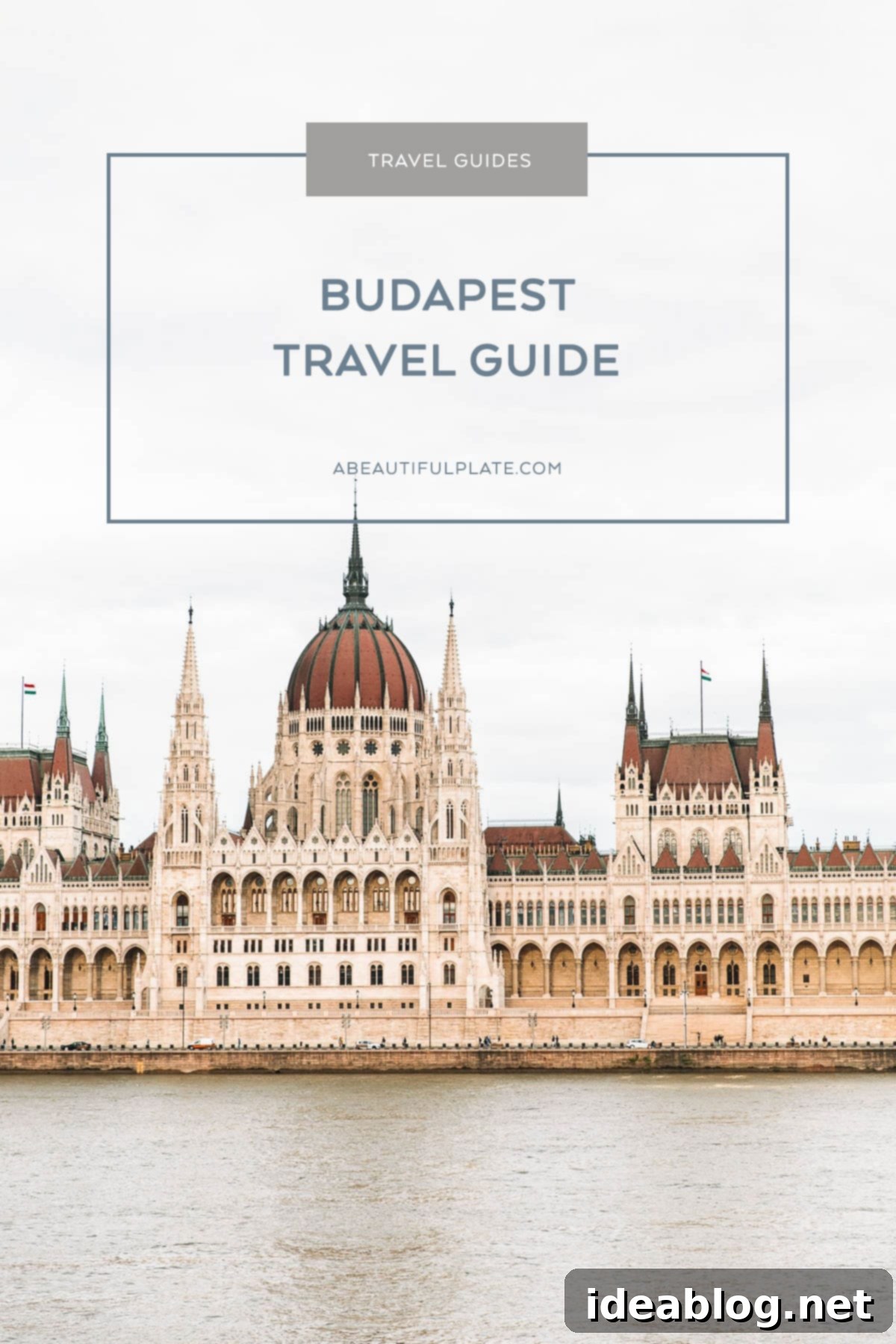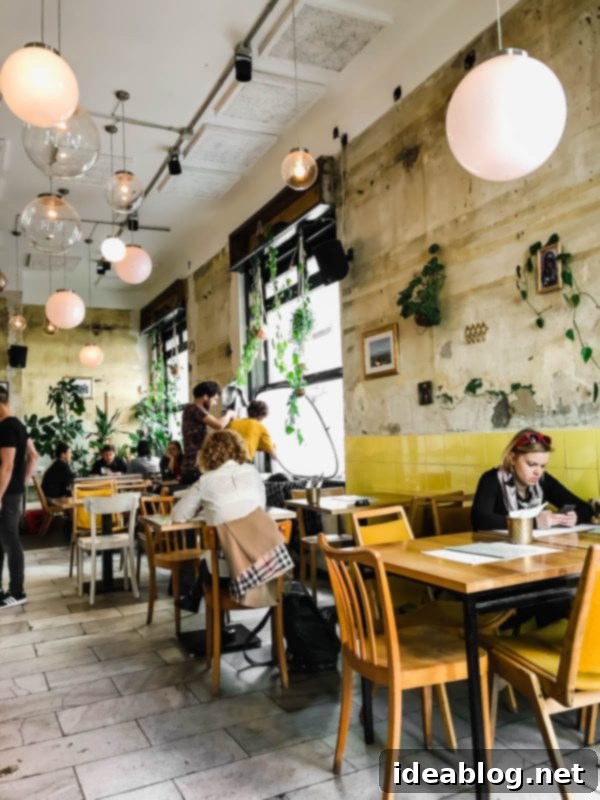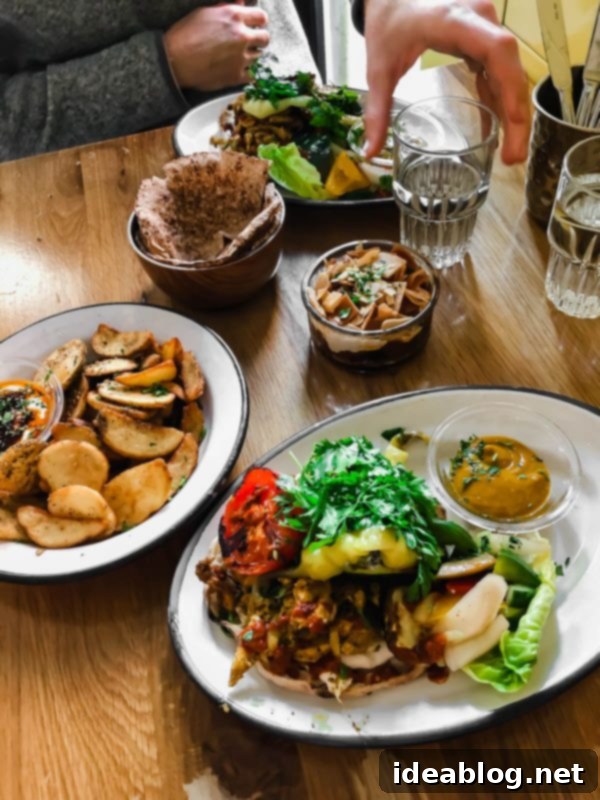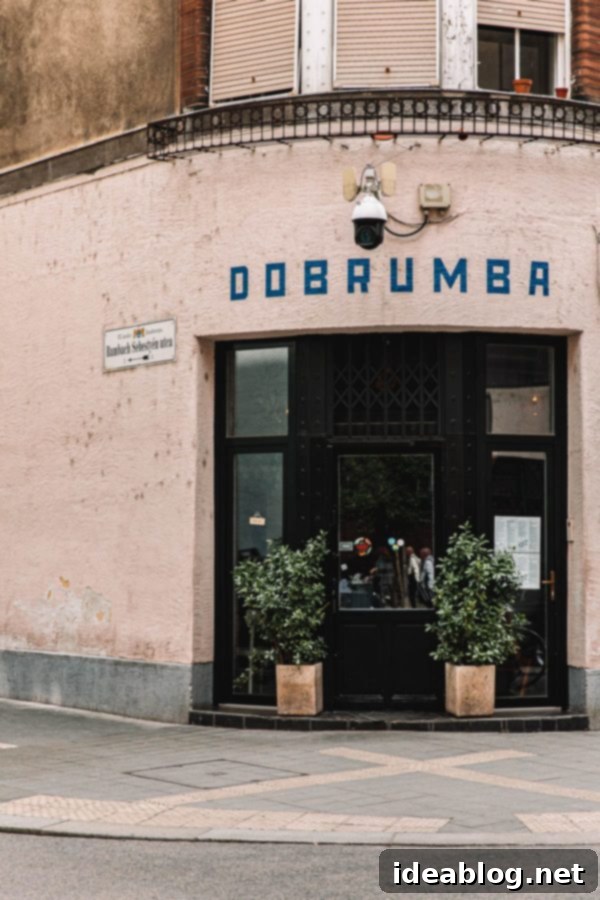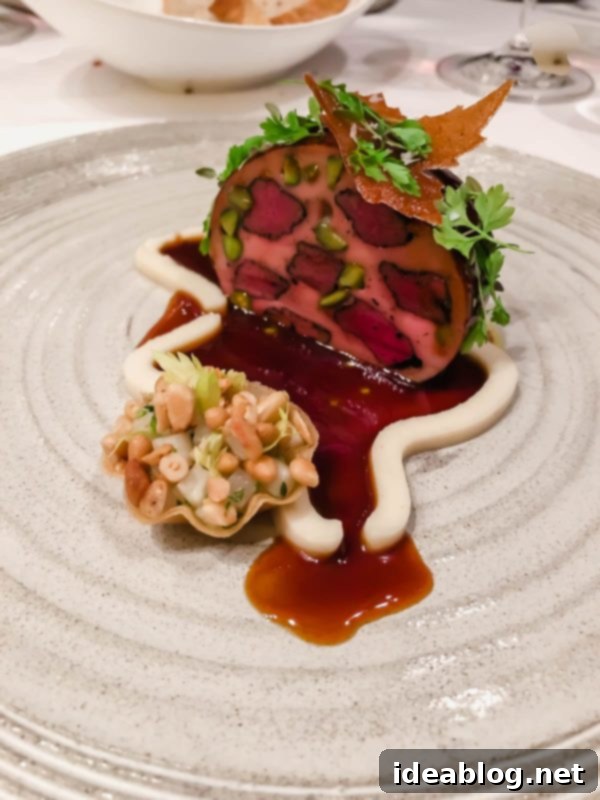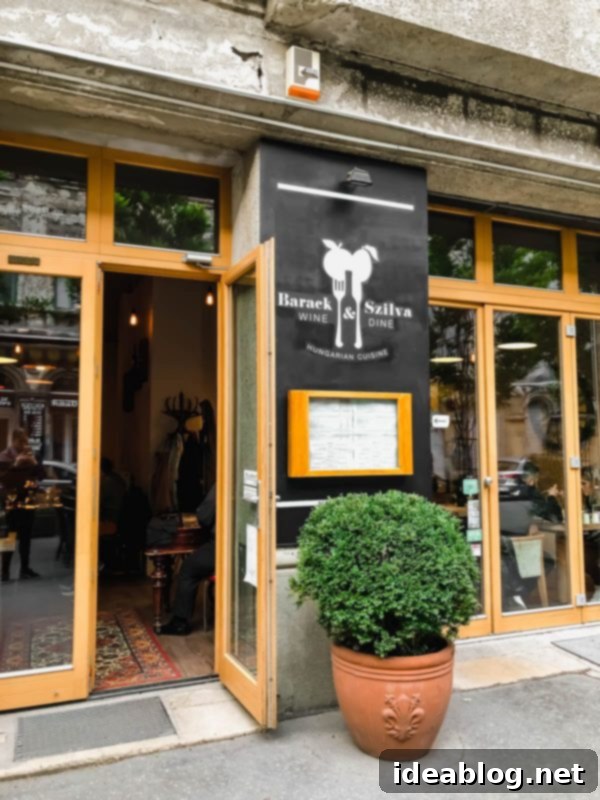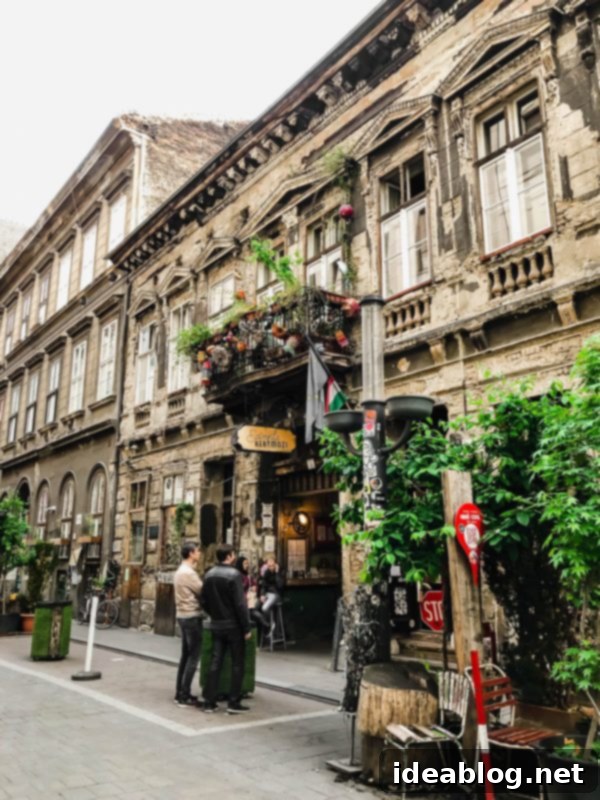Ultimate Budapest Travel Guide: Discover Hidden Gems, Best Foods & Must-See Attractions
For a custom Google map containing all of these spots and more, click here.

After months of anticipation, I’m thrilled to finally share my comprehensive Budapest Travel Guide! This guide is designed to help you plan an unforgettable trip to one of Europe’s most captivating cities, covering everything from iconic landmarks and cultural experiences to delectable dining spots and practical travel tips.
Last spring, my husband Connor and I embarked on a three-day adventure to this magnificent city. We had heard countless glowing recommendations from family and friends over the years, and when our local airport (ORD) introduced a direct flight to Budapest, it felt like destiny calling. With limited vacation days, we always aim to maximize our international trips, making every moment count.
For this particular journey, we decided to explore not one, but three distinct Central European capitals: Budapest, Vienna, and Prague. While each city undeniably deserves a longer, more leisurely visit, our carefully planned itinerary allowed us to immerse ourselves in their unique cultures and attractions within a single week. The stark differences between these vibrant cities truly enhanced our travel experience, offering a diverse palette of history, architecture, and culinary delights.

How We Planned Our Central European Adventure
Connecting these beautiful cities was incredibly easy and efficient thanks to the Austrian high-speed train system. We traveled from Budapest to Vienna, and then on to Prague, with the longest leg (Vienna to Prague) taking a comfortable four hours. The trains were not only extremely comfortable, offering scenic views of the European countryside, but also surprisingly affordable, making them an excellent choice for exploring Eastern Europe on a budget.
Our Basic Trip Itinerary:
- Days 1 – 3: Budapest, Hungary
- Day 4: Vienna, Austria
- Day 5 – 7: Prague, Czech Republic (Prague Travel Guide)
We deliberately allocated the majority of our time to Budapest and Prague, with just a quick day-long stopover in Vienna. This decision was based on a combination of factors, including personal interest in Budapest’s unique history and thermal baths, and Prague’s enchanting medieval charm. This allowed us to delve deeper into these two cities while still getting a taste of Vienna’s imperial grandeur.
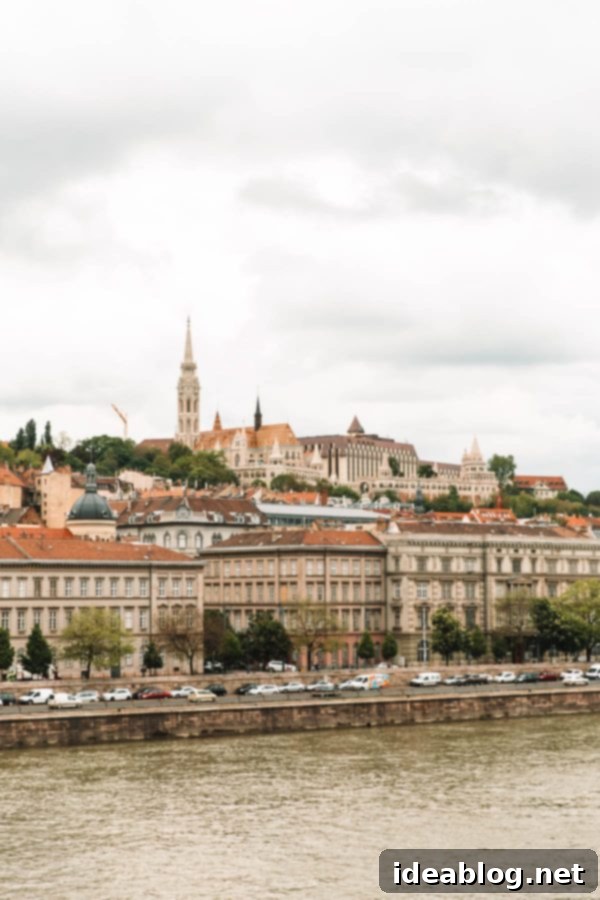
WHY BUDAPEST SHOULD BE AT THE TOP OF YOUR TRAVEL BUCKET LIST
Our time in Budapest was nothing short of magical, and we wholeheartedly recommend adding it to your travel itinerary! What truly sets Budapest apart is its distinctive character. It felt remarkably different from any other European city we’ve visited, which made our experience feel exceptionally unique and special. This isn’t just another beautiful European capital; it’s a city with its own compelling identity.
Another significant advantage we discovered was that Budapest was notably less crowded and touristy compared to many other popular European destinations on our itinerary. This allowed for a more authentic and relaxed exploration, free from overwhelming queues and bustling masses, making it easier to connect with the city’s true essence.
Budapest boasts a captivating blend of stunning and diverse architecture, ranging from Gothic and Renaissance to Art Nouveau. Its culinary scene offers a delightful fusion of traditional Hungarian flavors and modern gastronomic innovations. Furthermore, its rich and complex history is palpable in every street and monument. All these elements combine to create an incredibly compelling travel destination.
Beyond its charm, Budapest is also considerably more affordable than many Western European capitals. This makes it an ideal choice for travelers mindful of their budget, allowing for a richer experience without breaking the bank. From accommodation to dining and activities, your money often goes further here, enabling you to enjoy more of what the city has to offer.
Below, I’ve detailed our must-visit destinations, alongside several of our favorite restaurants and dining establishments. I sincerely hope these recommendations prove invaluable in planning your own extraordinary trip to Budapest!
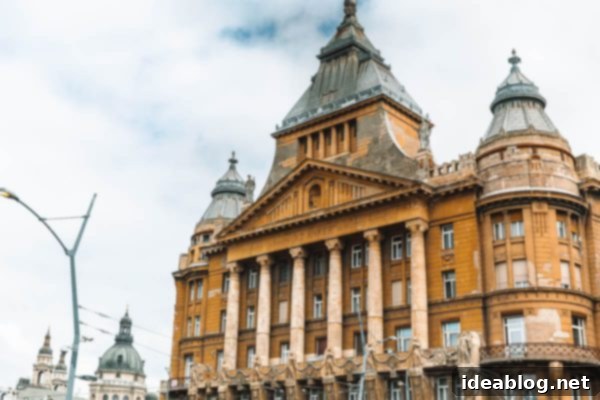
Access a FREE custom ‘Budapest Travel Guide Google Map‘ by clicking here. It includes all destinations and restaurants listed in this post (as well as additional ideas from our research). This map is your personal curated guide to navigating the city with ease.
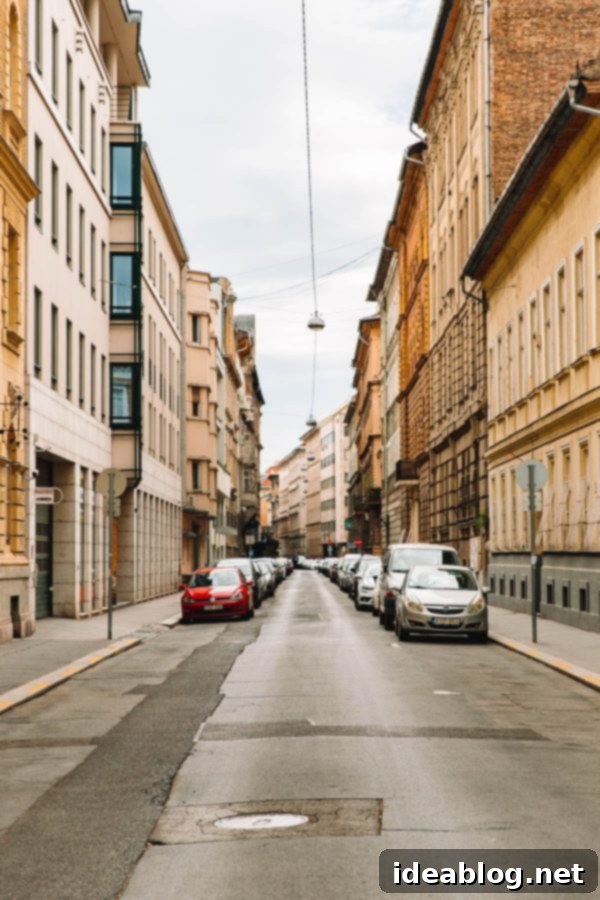
Essential Budapest Travel Tips
- Arriving from the Airport: If you’re traveling into the city from Budapest Ferenc Liszt International Airport, always use the dedicated taxi line in the arrival area. This service allows you to input your final destination and receive a set, transparent fare upfront, eliminating any surprises or potential overcharging. It’s important to note that ride-sharing services like Uber are not available in Budapest. Expect the journey to the city center to cost approximately $25 USD.
- Getting Around Budapest: While Budapest is a wonderfully walkable city, with many attractions within comfortable strolling distance, its public transportation system is incredibly cheap, safe, and efficient. You can choose between single-fare tickets (valid for one validation) or convenient 24-hour passes, which are perfect for intensive sightseeing. The trams, buses, and metro lines cover the entire city, making navigation a breeze.
- Offline Maps: To conserve your cellphone data and ensure seamless navigation, I highly recommend downloading Google Maps for Budapest (including my custom map) before you arrive. This allows for easy reference even when you don’t have an internet connection.
- Taxi Etiquette: A crucial tip for visitors: do not hail taxis directly from the street. Unlicensed taxis are notorious for significantly overcharging tourists. Always use the dedicated airport taxi service or reputable taxi apps (like Főtaxi) if you need a ride.
- Thermal Baths Essential: If you’re planning to indulge in Budapest’s famous thermal baths, remember to pack a bathing suit and sandals. Many baths offer towel rentals, saving you the hassle of packing one, but having your own ensures comfort and hygiene.
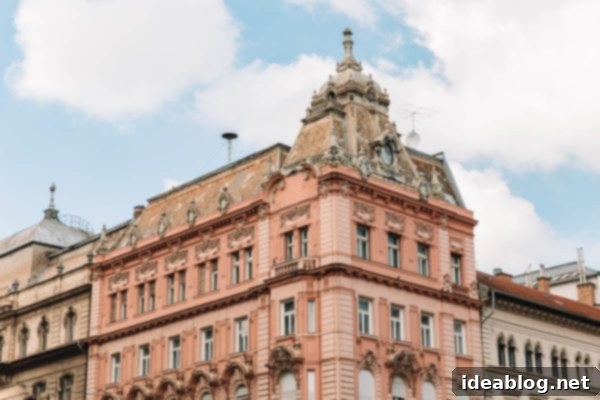
Budapest Currency: Hungarian Forint (HUF)
Although Hungary is a proud member of the European Union, it does not use the Euro. The local currency is the Hungarian Forint (HUF). The good news for American tourists is that the exchange rate for the Forint is often very favorable, making Budapest a significantly more budget-friendly destination compared to its Western European counterparts. Roughly 300 HUF equals 1 US dollar, giving you excellent purchasing power.
You’ll find that nearly all restaurants, shops, and tourist attractions readily accept credit cards, so there’s no need to withdraw a large amount of cash. However, carrying a small quantity of Forints is always helpful for public transportation tickets, small purchases from local vendors, or the occasional tip. It offers convenience and supports smaller businesses.
Tipping in Budapest: Most restaurants in Budapest automatically include a 12% service fee on your bill. In such cases, additional tipping is generally not expected. If, however, a restaurant does not include a service fee, it is customary to add a 10%-12% tip to your bill. You can simply inform your waiter to add this amount when you’re paying, making the process straightforward and polite.
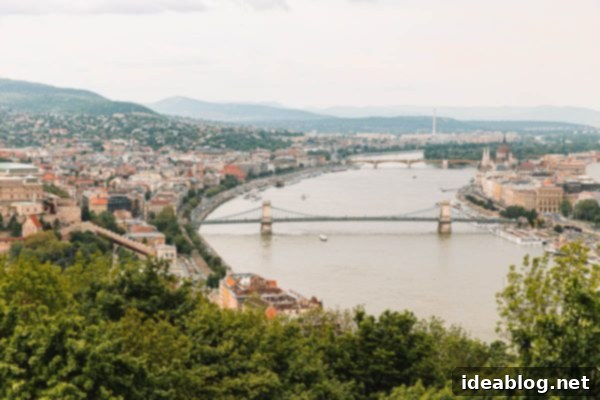
Where to Stay in Budapest: Buda vs. Pest
When choosing accommodation in Budapest, your primary decision will be whether to stay on the Buda or Pest side of the city, which are famously divided by the majestic Danube River. Each side offers a distinct atmosphere and appeal.
The Buda side, older and characterized by its picturesque hills and historical charm, tends to be more residential and quieter. It’s home to iconic landmarks like Buda Castle and offers breathtaking panoramic views. The Pest side, in contrast, is the more vibrant and bustling heart of the city, boasting most of the restaurants, shops, nightlife, and major transportation hubs.
While you truly can’t go wrong with either choice, I generally recommend staying on the Pest side for first-time visitors or those seeking convenience. Its central location makes accessing attractions, diverse dining options, and public transport much easier, allowing you to maximize your exploration time.
We opted for a very affordable and centrally-located Airbnb just a block or two off the Danube River on the Pest side, which proved to be an excellent base. However, Budapest offers a plethora of fantastic hotel options across all budget ranges. Overall, Budapest is a remarkably safe city, and we felt completely comfortable walking and utilizing public transportation at all hours of the day. As with any major urban center, it’s always wise to take normal precautions and be aware of your surroundings.
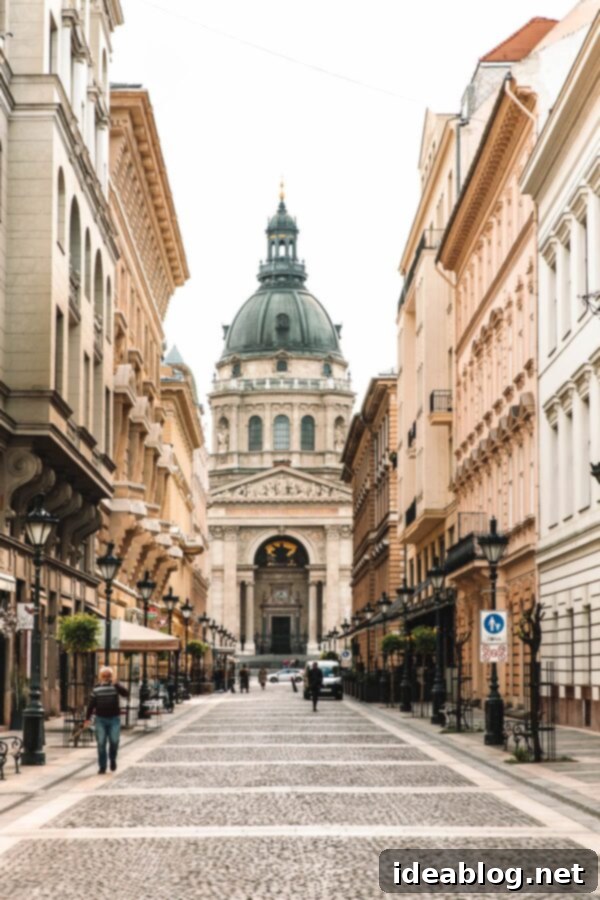
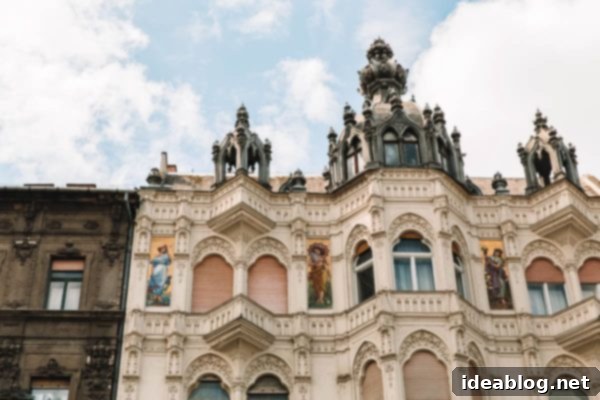
Unmissable Things to Do in Budapest
1. Take a Free City Walking Tour
Many European cities, including Budapest, generously offer a variety of freewalking tours (tipping your guide at the end is customary and highly encouraged). Our particular tour in Budapest was exceptional; our guide was not only incredibly knowledgeable, sharing fascinating historical anecdotes and local insights, but also highly entertaining. The group size was small and the pace was perfect, ensuring we saw and learned a significant amount about the city’s rich past and vibrant present.
The beauty of these tours is their flexibility – you typically don’t need to arrange or book them far in advance. Simply show up at the designated meeting spots. However, it’s always a good idea to check their website for the most up-to-date times and meeting locations to avoid any disappointment.
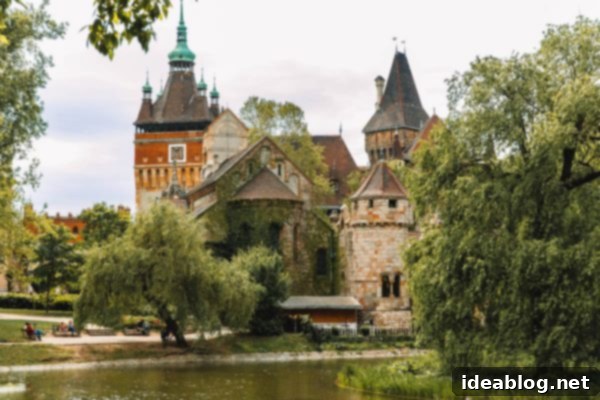
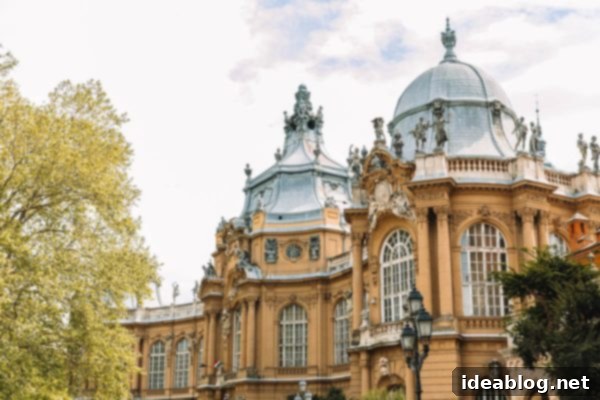
2. Explore City Park (Városliget)
One of the first enchanting experiences we had upon arriving in Budapest’s city center was a delightful stroll to City Park (Városliget). This expansive public park is much more than just green space; it’s a cultural and recreational hub brimming with attractions. Within its verdant grounds, you’ll discover the fairytale-like Vajdahunyad Castle, the famous Széchenyi Thermal Bath and Swimming Pool, the monumental Heroes’ Square, the city zoo, and several fascinating museums. It’s a perfect spot for relaxation, history, and family fun.
To reach City Park, I recommend taking a leisurely walk down Andrássy Avenue (Andrássy út). This grand boulevard, recognized as a UNESCO World Heritage site, is one of Budapest’s oldest and most elegant streets, renowned for its stunning Neo-Renaissance mansions and beautiful tree-lined paths. The walk itself is an attraction, offering a glimpse into the city’s opulent past.
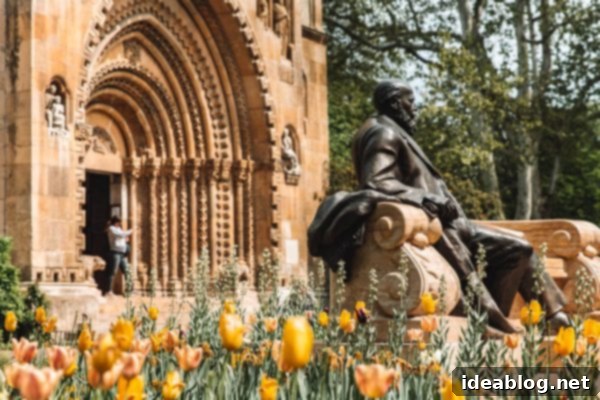
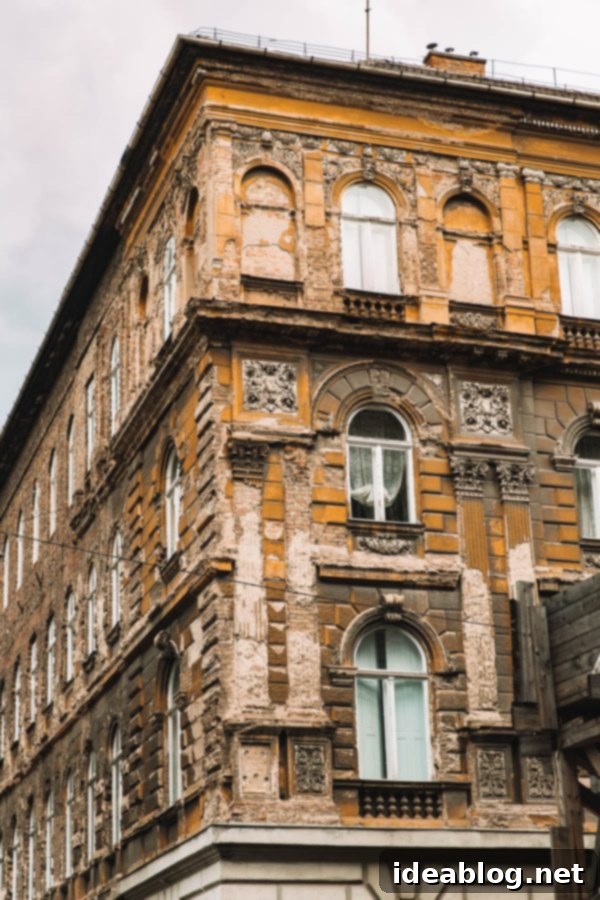
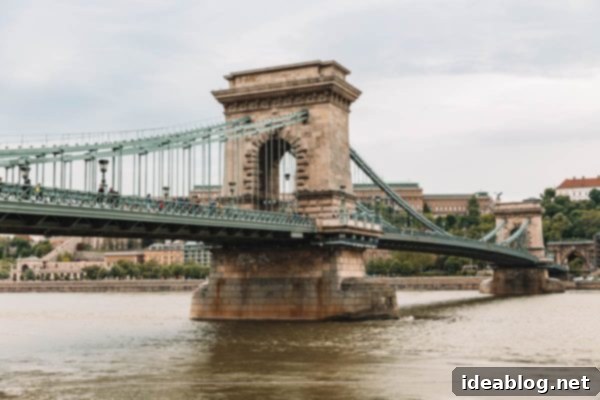
3. Walk Across the Iconic Szechenyi Chain Bridge
Connecting the historic Buda and vibrant Pest sides of Budapest, only a handful of central bridges span the Danube River. Among them, the Szechenyi Chain Bridge stands out as the most iconic and picturesque for a pedestrian crossing (the Liberty Bridge is a charming second). Its wrought-iron structure and lion statues make for incredible photo opportunities, especially at sunset.
As you traverse this magnificent bridge, you’ll be treated to stunning views of the river and both cityscapes. On the Buda side, you’ll find yourself at the foot of Buda Castle Hill, a UNESCO World Heritage site that is home to the majestic Matthias Church and the fairytale-like Fisherman’s Bastion. Crossing the bridge is not just a practical journey, but an experience in itself, allowing you to appreciate the architectural grandeur of Budapest.
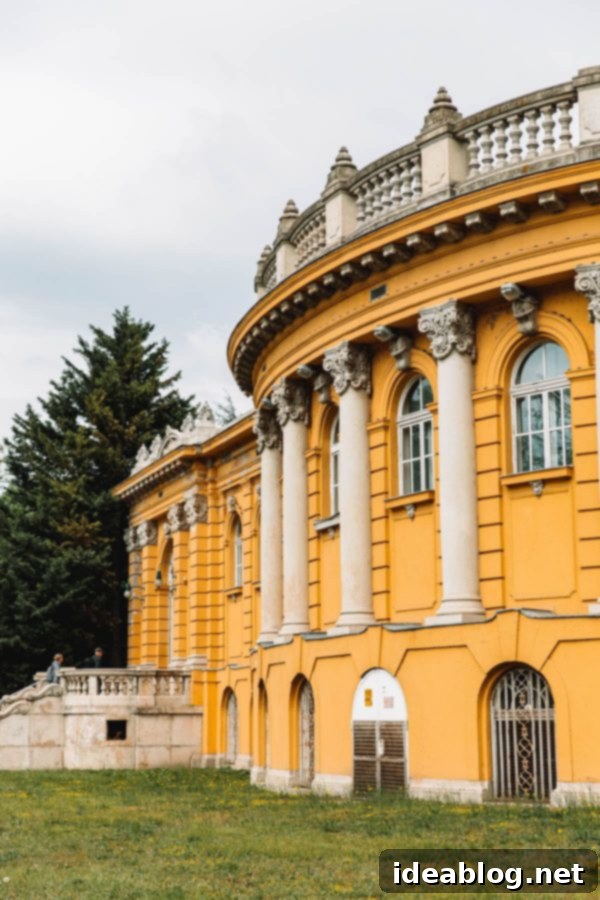
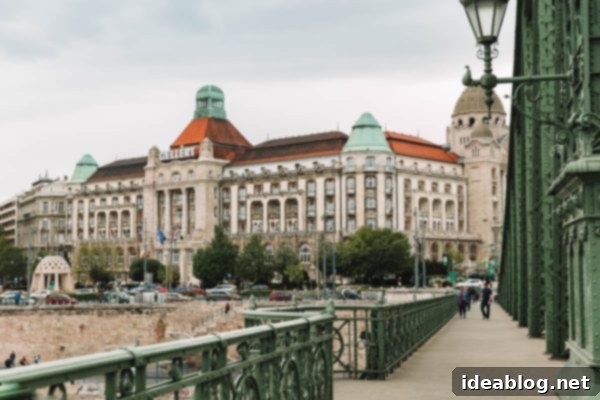
4. Indulge in One of Budapest’s Famous Thermal Baths
Budapest is famously known as the “City of Spas,” thanks to its abundance of thermal baths fed by natural hot springs. While I would classify it more as an interesting cultural experience rather than a luxurious or deeply romantic spa day, it certainly offers a unique and memorable activity. It’s important to set expectations: think more grand public swimming pool complex with therapeutic waters, rather than a secluded, high-end spa retreat.
We opted to visit the renowned Gellért Thermal Spa, primarily due to its convenient location which integrated seamlessly with the rest of our itinerary. Its stunning Art Nouveau architecture alone makes it worth a visit. Depending on your preferences and what kind of atmosphere you seek, Budapest offers a diverse range of bath options.
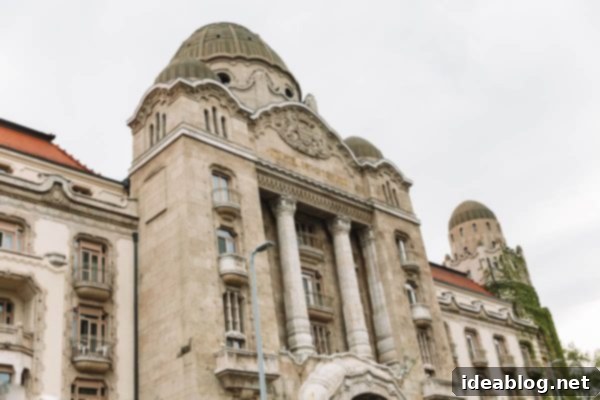
Here are a handful of highly recommended thermal bath options:
- Gellért Spa: Dating back nearly a hundred years, this spa is celebrated for its stunning Art Nouveau architecture. It’s conveniently located on the Buda side, near Memento Point and the Liberty Statue, offering beautiful indoor pools.
- Széchenyi Thermal Bath: The largest and arguably most famous thermal bath in Budapest, located within the expansive City Park. It’s known for its vibrant atmosphere, especially its grand outdoor pools where locals often play chess on floating boards.
- Rudas Thermal Bath: One of the oldest thermal baths in the city, Rudas offers a mix of traditional Ottoman-era pools and a modern rooftop pool that provides incredible panoramic views of the Danube and the city.
- Király Thermal Bath: For a more authentic, less touristy experience, Király Thermal Bath offers a traditional ambiance. While it hasn’t seen recent updates, its smaller size and historical feel often mean it’s less crowded and a bit cheaper.
Travel Tip: The majority of Budapest’s thermal baths provide private changing rooms or secure lockers for your personal belongings. Most baths are co-ed, so remember to bring your bathing suit and flip-flops. I highly recommend renting towels at the baths to avoid the inconvenience of packing and lugging around a wet towel afterwards. Each bath has its own unique rules and areas, so it’s a good idea to check their specific guidelines before your visit.

5. Explore Historic Buda and Castle Hill on Foot
Buda, the older, hillier, and inherently more historical side of Budapest, quickly became my favorite area in the city. While we chose to stay in an Airbnb on the Pest side for its proximity to restaurants and transportation, I strongly recommend dedicating a significant portion of your time to exploring Buda on foot. It offers a captivating contrast to Pest’s energy and reveals a quieter, more residential charm.
Buda is a treasure trove of historical landmarks. It is famously home to the ornate Matthias Church, the whimsical Fisherman’s Bastion, the expansive Buda Castle complex, and provides some of the absolute best panoramic views of the city and the magnificent Parliament Building across the Danube. The cobblestone streets, quaint houses, and serene atmosphere make it incredibly charming and picturesque.
Travel Tip: At the base of Buda Castle Hill, there is a funicular offering a ride to the top. However, it often has very long lines, especially during peak season. I highly recommend skipping it, wearing comfortable walking shoes, and utilizing the well-maintained walking paths instead. The ascent is rewarding, offering evolving views as you climb, and it helps you avoid unnecessary delays.
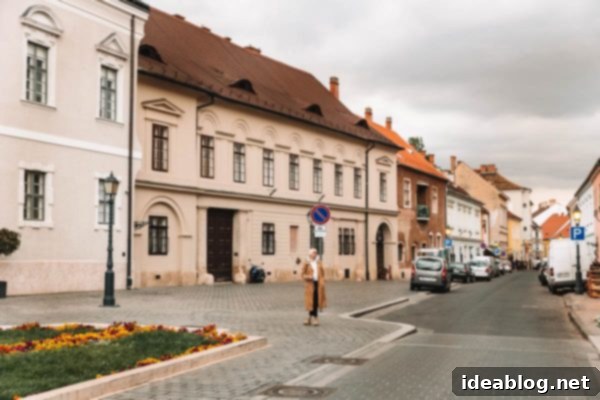
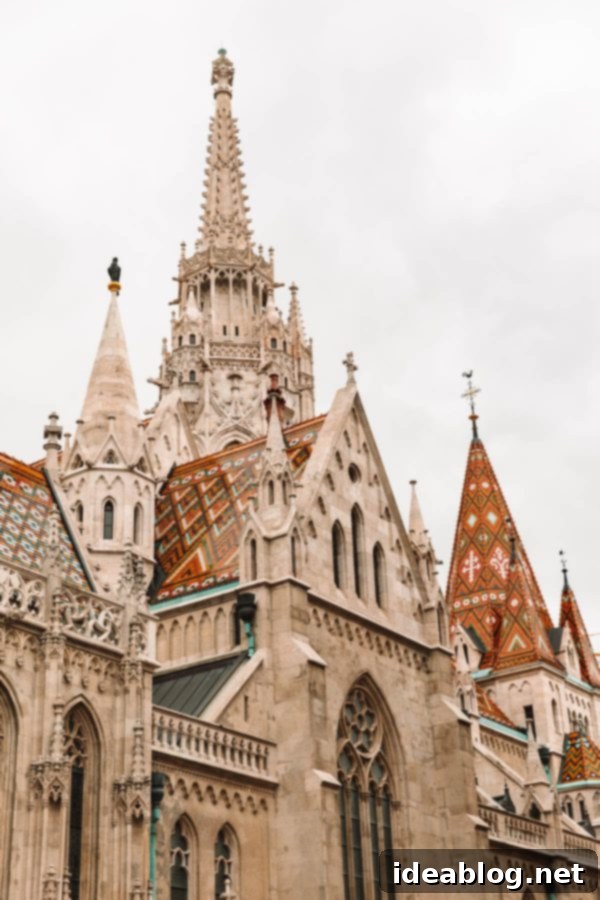
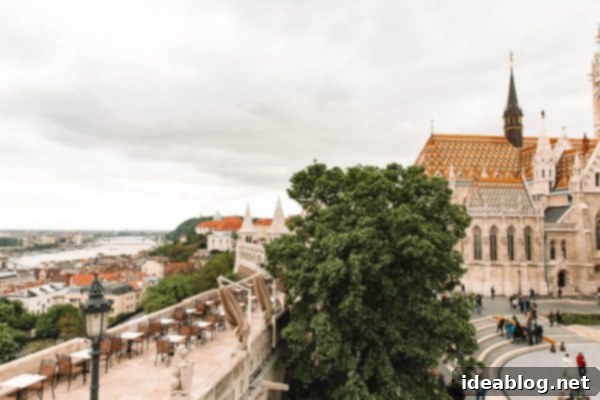
6. Visit Matthias Church & Enjoy the Views at Fisherman’s Bastion
Most of Buda’s major attractions, including the stunning Matthias Church and the picturesque Halászbástya (Fisherman’s Bastion), are conveniently clustered together in one central area on Castle Hill, making them easy to explore in conjunction. This area is a must-visit for its historical significance and incredible photographic opportunities.
While you’re there, be sure to take your time to admire the intricately patterned, multi-colored roof tiles of Matthias Church, a true masterpiece of Gothic architecture. Its interior is equally impressive, with vibrant frescoes and stained-glass windows. Immediately adjacent, Fisherman’s Bastion offers unparalleled panoramic views overlooking the Pest side of the city, including the magnificent Parliament Building and the winding Danube River. The fairytale turrets and arcades of the Bastion provide a perfect frame for these breathtaking vistas.
Travel Tip: If you find yourself in need of a delightful break from sightseeing, make your way to the nearby Ruszwurm Confectionery. As one of the oldest cafés in the city, established in 1827, it’s an institution. Grab a coffee and indulge in one of their many exquisite cake offerings. Their outdoor tables are perfect for people-watching and soaking up the historic ambiance of the Buda Castle District.
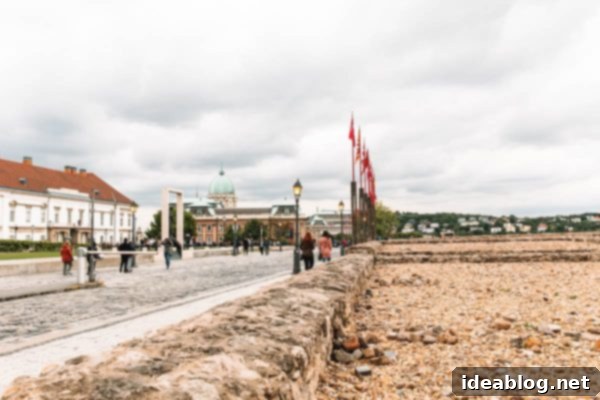
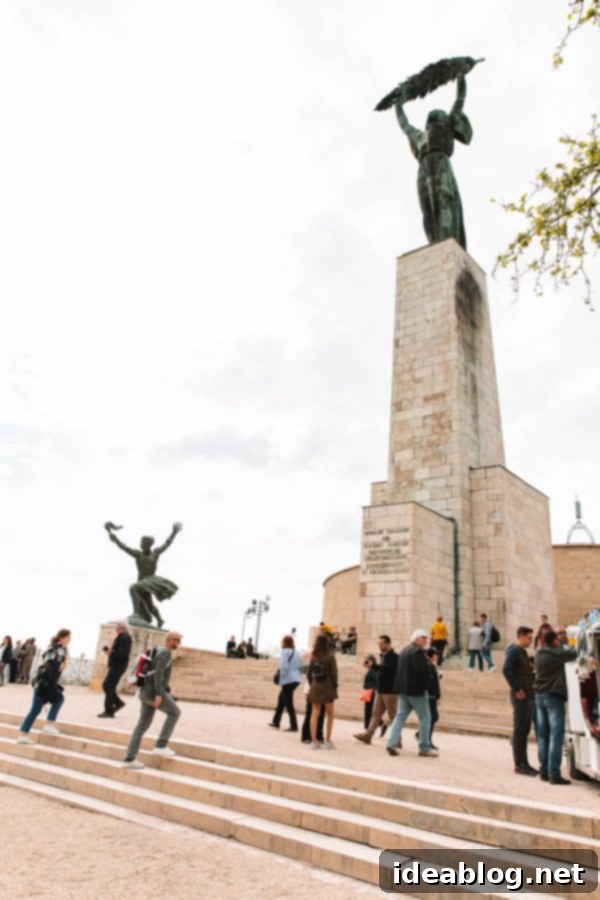
7. Hike Up Gellért Hill to Memento Point
After a stroll across Liberty Bridge or a rejuvenating visit to the Gellért Thermal Bath, I highly recommend embarking on a hike up Gellért Hill to Memento Point. This prominent hill is crowned by the famous Liberty Statue, a significant monument commemorating those who sacrificed their lives for Hungary’s independence. The journey to the top is rewarded with spectacular views and a sense of historical gravitas.
Travel Tip: While the hike up Gellért Hill is entirely paved, be prepared for a somewhat steep ascent. It’s not excessively long, but comfortable tennis shoes are definitely a must. The summit of Gellért Hill offers unparalleled panoramic views of the entire city, stretching from Buda Castle to the Parliament Building and across the Danube. Try to plan your visit for a day with clear weather to fully appreciate these breathtaking vistas, which are particularly stunning at sunset.
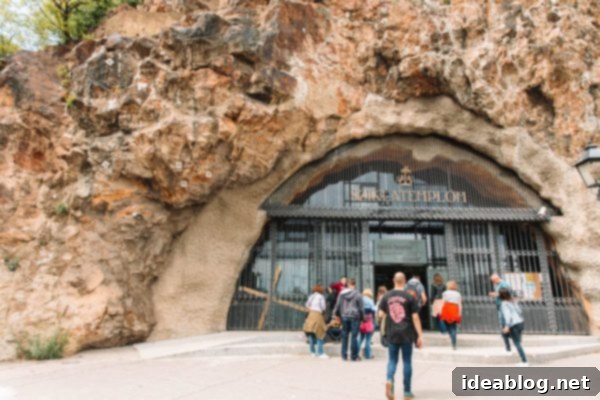
8. Explore Sziklatemplom (Cave Church)
Nestled within the natural caves of Gellért Hill, the unique Sziklatemplom, or Cave Church, offers a fascinating and distinct spiritual experience. This church is literally set within a cave system formed by hot springs, creating a truly atmospheric and unconventional place of worship. For a relatively modest admission fee, you can tour the interior and receive an informative audio guide that delves into the rich history of this small, intriguing church.
While perhaps not a top-tier must-visit for every traveler, it is certainly an interesting spot to explore, especially if you are already in the Gellért Hill area or have a particular interest in unique religious sites. Its cool, quiet interior provides a serene escape from the bustling city outside.
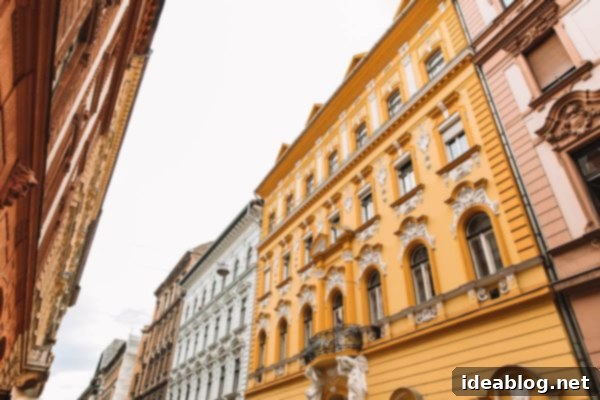
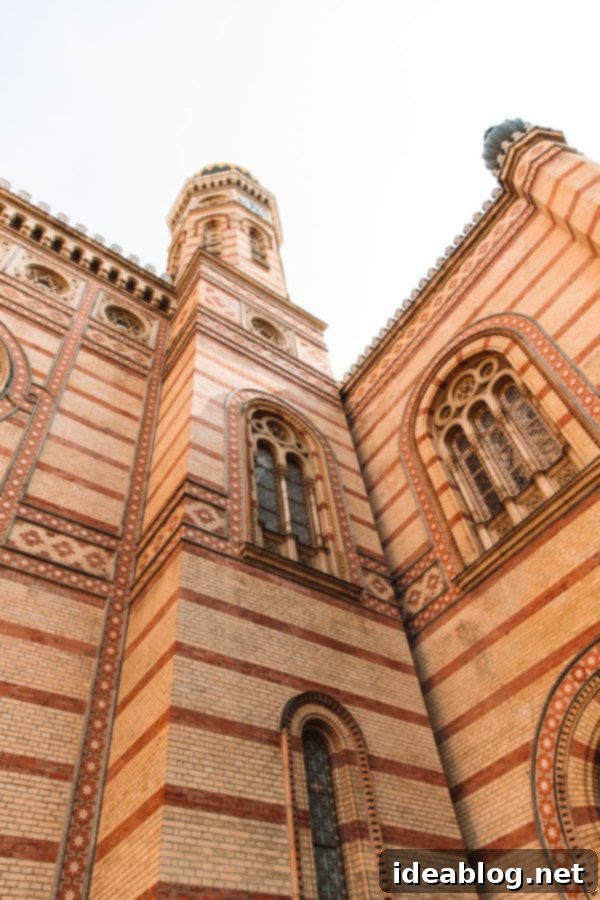
9. Tour Dohány Street Synagogue
Known affectionately as the Great Synagogue, the Dohány Street Synagogue is an architectural marvel and a deeply significant historical site. It is not only the largest synagogue in Europe but also the second largest in the entire world, boasting an impressive blend of Moorish Revival and Byzantine styles. The complex also houses the Hungarian Jewish Museum, which offers profound insights into the rich cultural heritage and often tumultuous history of the Jewish community in Budapest.
We highly recommend planning your visit to coincide with one of the free English-guided tours. These tours provide invaluable context, allowing you to learn more about the synagogue’s intricate history, its resilience, and the broader narrative of Jewish life in Hungary. Our tour was incredibly moving and informative, offering a powerful reflection on the past while appreciating the stunning beauty of its interior, which is adorned with vibrant frescoes and intricate details.
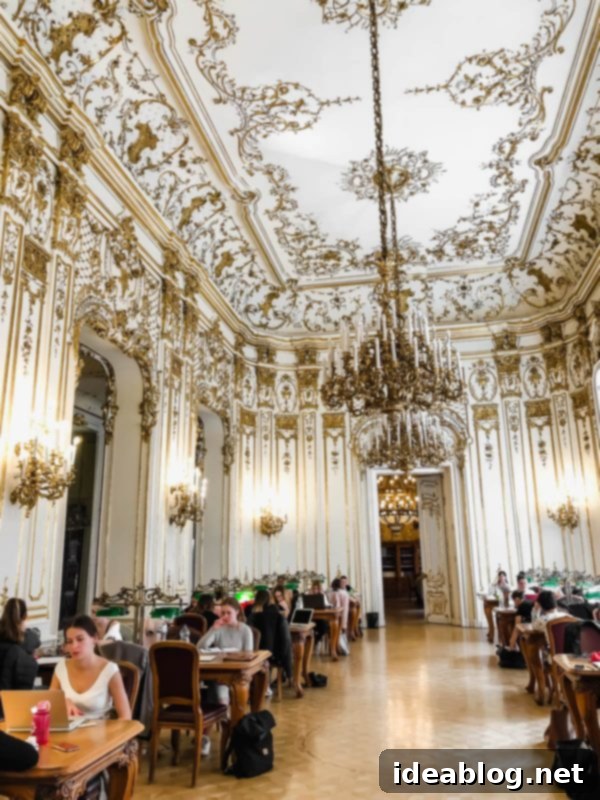
10. Pop into the Metropolitan Ervin Szabó Library
If you find yourself in the vicinity, take a moment to step inside the magnificent Metropolitan Ervin Szabó Library. This architectural gem is uniquely housed within the stunning Neo-Baroque Wenckheim Palace, originally constructed in 1889. It’s a true hidden treasure that many tourists overlook, offering a glimpse into Budapest’s aristocratic past.
Travel Tip: Upon entering, ask for a visitor’s pass at the front desk. Once you have it, take the elevator directly to the fourth floor. Here, you can wander through the old palace rooms, which have been beautifully preserved and now function as public reading rooms. The grandeur of the original palace interiors, with their ornate wood paneling, chandeliers, and elegant furnishings, is simply breathtaking and makes for a wonderfully unexpected experience.
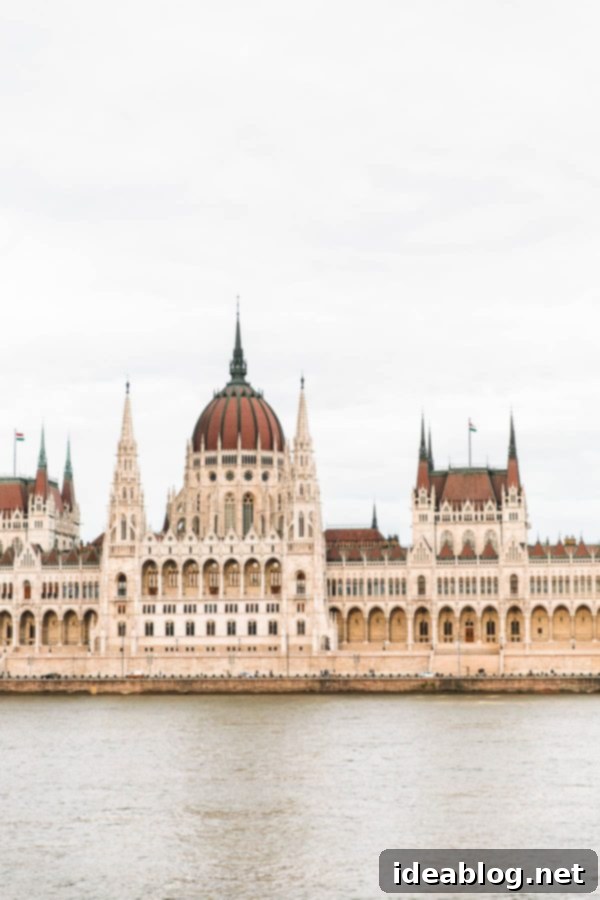
11. Soak Up the Parliament’s Grandeur on a Night River Cruise
Without a doubt, one of the most stunning and iconic buildings in all of Budapest is the magnificent Hungarian Parliament Building. While exceptional panoramic views of its grandeur can be appreciated from the Buda side of the city (especially from Fisherman’s Bastion or Gellért Hill), it is also absolutely worth exploring up close during the day.
However, the Parliament truly transforms and shines in its full glory at night when it is meticulously lit up, casting a golden glow over the Danube. A sightseeing river night cruise is, in my opinion, the absolute best way to take in this breathtaking spectacle. This experience is so magical that I highly recommend fitting it into your itinerary – it’s an unforgettable sight that perfectly captures the city’s romantic essence.
Travel Tip: We booked this one-hour sightseeing river cruise, which proved to be the ideal length for a quick yet comprehensive journey up and down the Danube River. While it isn’t a guided tour providing historical commentary, it offers an incredible opportunity to simply soak up the illuminated city at night, passing by other illuminated landmarks like Buda Castle and the Chain Bridge. The boat itself might not be luxurious (and the included welcome drink is, admittedly, quite awful), but the photography opportunities are endless, and it’s a very affordable way to witness Budapest’s nocturnal splendor.
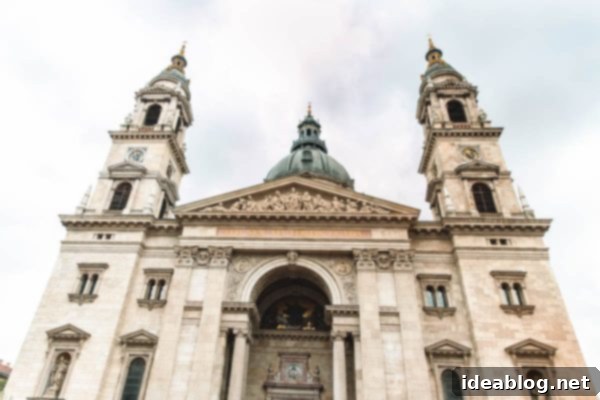
12. Visit St. Stephen’s Basilica
As the largest church in Budapest, St. Stephen’s Basilica is an imposing and stunning architectural masterpiece. Its grand interior, adorned with intricate mosaics, rich marble, and exquisite frescoes, is a sight to behold. Beyond its beauty, the Basilica offers incredible panoramic views of the city from its observatory deck (which requires a small donation fee for access). For those up for a physical challenge, you can ascend the 364 steps to the top. Alternatively, a convenient elevator option is available for anyone preferring an easier route to the breathtaking vistas.
The church also holds a unique and revered relic: the literal mummified right hand of St. Stephen, the first king of Hungary, enshrined within. While we didn’t spend an extensive amount of time here, the Basilica is undoubtedly worth a visit for its architectural grandeur, historical significance, and superb central location, making it easily accessible as you explore the Pest side of the city.
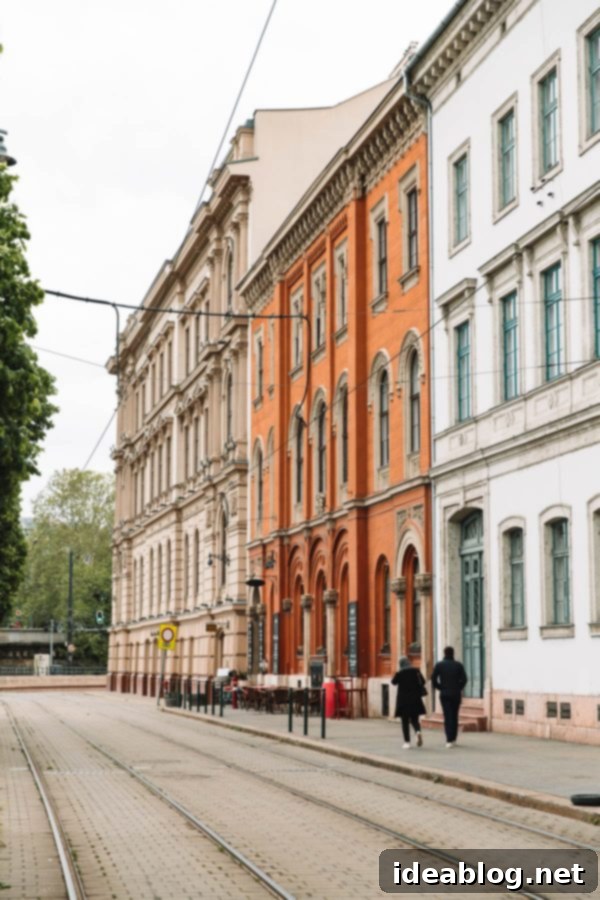
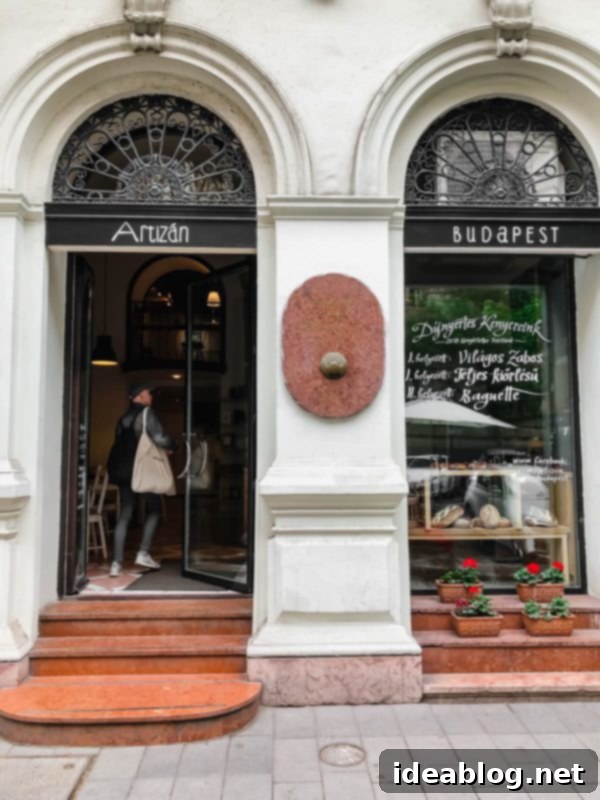
Where to Eat in Budapest: A Culinary Journey
Budapest’s culinary scene is a delightful blend of traditional Hungarian flavors and modern gastronomic innovations. Whether you’re craving a hearty goulash, delicate pastries, or international cuisine, the city offers something to satisfy every palate. Don’t forget to use our custom map!
Travel Tip: Get directions and precise locations for all of the delectable spots listed below in our custom Budapest Google map. It’s your personal guide to the city’s best eats!
PASTRY SHOPS AND BAKERIES:
Artizán: This exceptional bakery is a true gem, specializing in artisanal sourdough breads and exquisite homemade pastries. We absolutely adored their currant and custard-filled pastry (as shown below), but honestly, everything we tried here was phenomenal. It’s an ideal spot to pause for a satisfying snack and a well-deserved coffee after exploring the Parliament Building. Artizán offers both cozy indoor seating and charming outdoor tables, perfect for enjoying the city’s atmosphere.
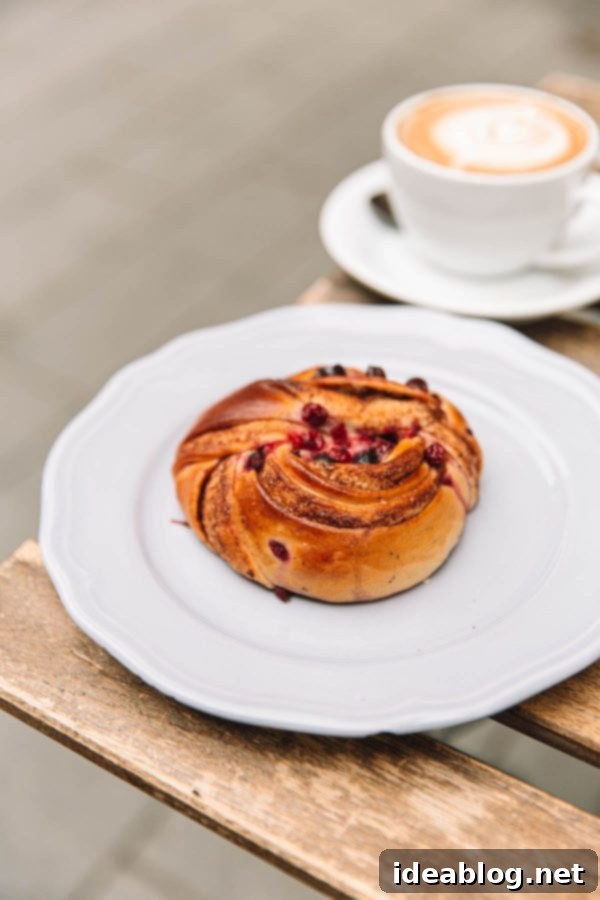
Pékmühely 2: This tiny and unassuming bakery, nestled on the Buda side just a few blocks from the Gellért Thermal Bath, is a true hidden treasure. It lacks prominent signage and would be nearly impossible to find if you weren’t actively looking for it, adding to its authentic charm. They bake wonderful pastries, including traditional khakis csniga (cocoa snails), and a variety of delicious breads. It’s definitely worth the effort to seek out if you’re in the area or exploring Memento Park, offering a taste of genuine Hungarian baking.
Ruszwurm: Located perfectly in the heart of the Buda Castle District, just around the corner from Matthias Church, Ruszwurm is an institution. Established in 1827, it holds the distinction of being one of the oldest cafés in Budapest. They offer a tempting array of countless cakes by the slice, including their famous Dobos Torte and Krémes. While it might be a tad overpriced due to its prime location and historical status, it’s a delightful spot to grab an outdoor table, savor a traditional Hungarian dessert, and soak up the unique, historic atmosphere of this enchanting part of the city. The people-watching opportunities are excellent.
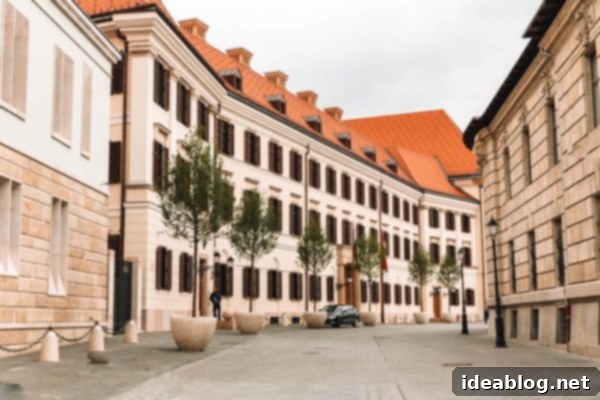
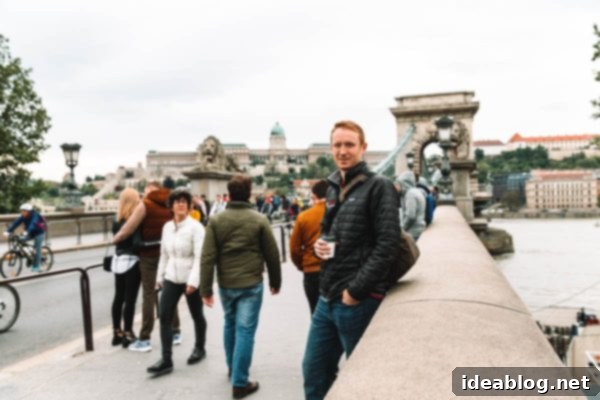

BREAKFAST AND LUNCH SPOTS:
Szimply: This trendy, albeit tiny, breakfast and lunch spot was undoubtedly one of our favorite culinary discoveries of the entire trip! The food at Szimply is not only absolutely delicious but also beautifully presented and incredibly creative. They even offer delightful pre-fixe breakfast menus if you’re keen to sample a variety of their innovative dishes. The small, open kitchen is visible from the seating area, allowing you to watch as your exquisite breakfast or lunch is meticulously prepared. For the perfect pairing, be sure to grab a fantastic coffee at Kontakt, conveniently located directly across the street.
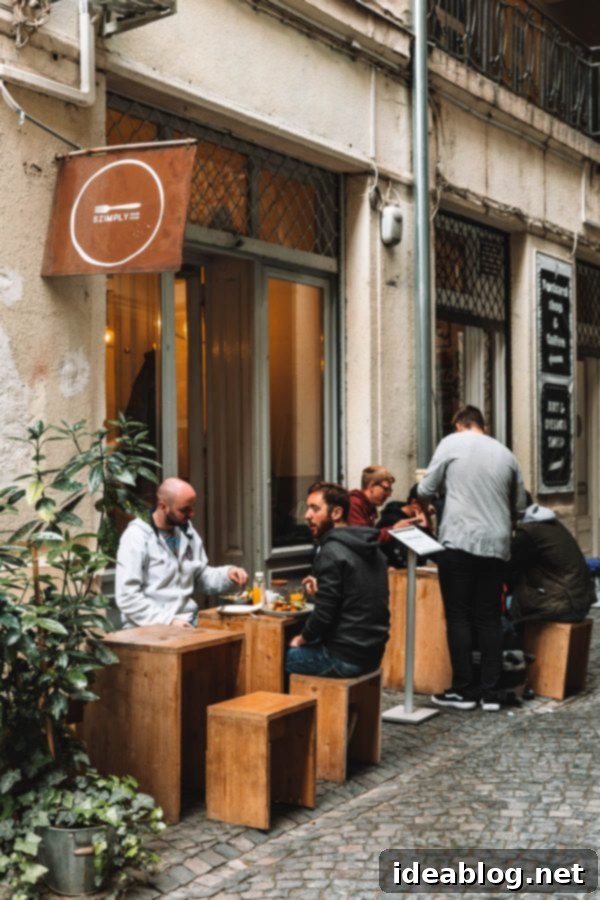

Dobrumba: We serendipitously stumbled upon Dobrumba on our very first day in Budapest and were so impressed that we made an immediate note to return for lunch the following day. Located in the lively Jewish Quarter, Dobrumba is a hip and vibrant restaurant specializing in exceptional Middle Eastern and Mediterranean cuisine. They offer an extensive menu with many delicious vegetarian-friendly dishes, which provided a wonderful and welcome break from traditional Hungarian fare.
Tip: Given its immense popularity among both locals and tourists, I highly recommend making a reservation in advance, especially if you plan to visit during standard lunch or dinner hours. If you’re flexible, trying to visit during off-peak times might allow you to snag a table without a booking.
Menza: A popular and slightly more tourist-friendly restaurant situated in District 6, Menza came highly recommended to us by both our local tour guide and even our Uber driver. While I might not necessarily choose it for a special dinner experience, it serves as an excellent spot to grab a satisfying lunch after a day of extensive exploring. This is especially true if the weather permits you to enjoy one of their many coveted outdoor tables on the vibrant Liszt Ferenc Square. Their menu offers a large and reliable selection of fresh, well-executed Hungarian staples and international dishes in a retro-chic setting.

FINE DINING RESTAURANTS AND BISTROS:
Onyx Restaurant (2 Michelin Stars): Our most memorable and favorite meal in Budapest was an exquisite experience at the two Michelin-starred Onyx Restaurant, conveniently located in District V. While it undoubtedly represents a splurge, I highly recommend taking advantage of the favorable US dollar exchange rate and treating yourself to one truly special fine dining experience while in Budapest. It offers exceptional value for money compared to similar establishments in other major European cities.
Onyx presents two meticulously crafted six-course pre-fixe menus for dinner, aptly named “Within Our Borders” and “Outside Our Borders.” We chose the “Within Our Borders” menu, which masterfully highlighted seasonal ingredients meticulously sourced from Hungary, presenting them with innovative techniques and artistic flair. Every dish was excellent, a true celebration of Hungarian gastronomy, and the entire evening was incredibly memorable, from the impeccable service to the sophisticated ambiance. Tip: Reservations at Onyx are highly sought after and can typically be made up to 90 days in advance, so plan accordingly to secure your spot.
Costes Downtown: Another highly acclaimed Michelin-starred restaurant, Costes Downtown consistently garners excellent reviews for its contemporary cuisine and elegant setting. It serves as a wonderful alternative if you’re seeking an upscale dining experience in Budapest and couldn’t secure a reservation at Onyx or prefer a different style of fine dining. Had we not chosen Onyx, Costes Downtown would have been our next top choice for a celebratory meal.

Barack & Szilva Étterem: While the food at this charming Hungarian bistro was perhaps not spectacular, the overall atmosphere and delightful ambiance made it a lovely dining experience. It offers a cozy and authentic setting, perfect for enjoying a relaxed evening meal with good company. If you’re looking for a traditional, unpretentious Hungarian bistro with a warm and inviting feel, this is a solid choice.
Hungarikum Bisztró: Although we didn’t have the chance to visit this highly-rated traditional Hungarian restaurant ourselves, we consistently heard glowing recommendations about its authentic cuisine and vibrant local atmosphere. Hungarikum Bisztró is renowned for serving classic Hungarian dishes in a charming, folk-inspired setting, often accompanied by live Gypsy music. Due to its popularity, reservations book up well in advance, so be sure to plan accordingly if you wish to experience its unique charm.

BARS AND OTHER MISCELLANEOUS SPOTS:
Szimpla Kert Ruin Bar: Budapest is famous for its unique ruin bars, and Szimpla Kert is not only the oldest but also the most iconic. Housed in a derelict factory building in the Jewish Quarter, it’s a sprawling, multi-level wonderland of quirky art installations, vintage furniture, and an electric atmosphere. It is absolutely worth checking out, especially if you’re nearby, if only to marvel at its incredibly eclectic and vibrant interior. If you do visit, take your time to explore the various bars and themed rooms on each level before settling on your drink of choice – there’s always something new to discover around every corner.
Central Market Hall (Nagy Vásárcsarnok): As one of the largest and oldest indoor food markets in Europe, Central Market Hall is definitely worth a visit, especially if you’re already in the vicinity of Liberty Bridge or planning a visit to Gellért Thermal Bath. The ground floor is a bustling hub for fresh produce, meats, cheeses, and spices, offering a vibrant glimpse into local life. The upper floor features food stalls serving traditional Hungarian dishes and souvenir vendors. While a variety of food tours are available, we personally felt that a quick self-guided exploration of the space was sufficient to appreciate its offerings without dedicating a huge amount of time.
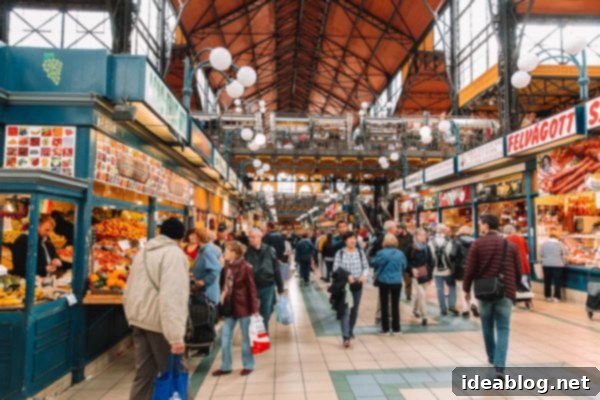

I hope this comprehensive guide inspires you to explore the incredible city of Budapest! From its stunning architecture and rich history to its unique thermal baths and delicious cuisine, Budapest truly offers an unparalleled travel experience. Don’t hesitate to ask any questions in the comment section below, and I’d be happy to address them and help you plan your perfect trip.
For a custom Google map (containing all of the places listed above, and many more hidden gems!), click here to unlock your personalized Budapest adventure.
